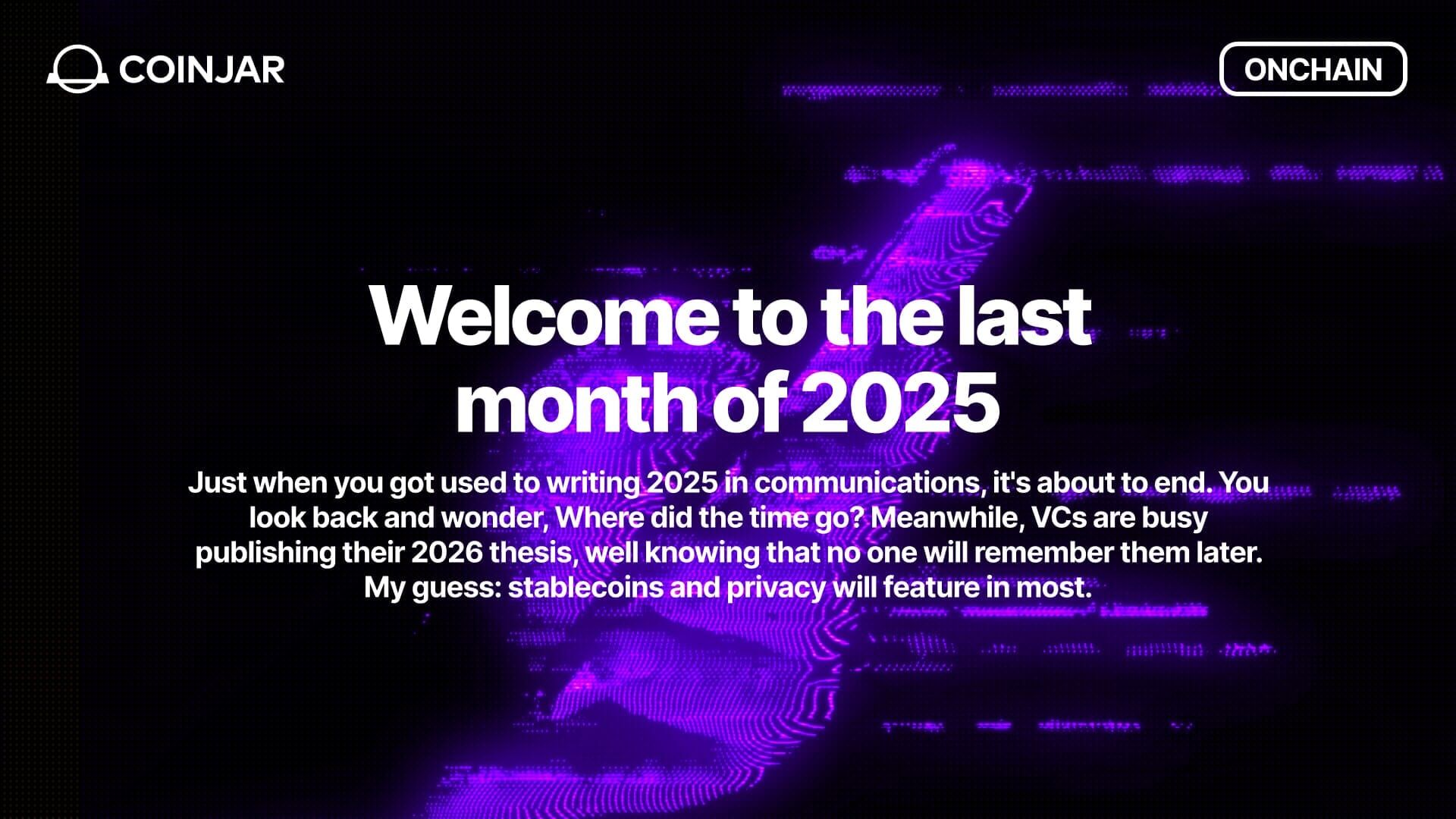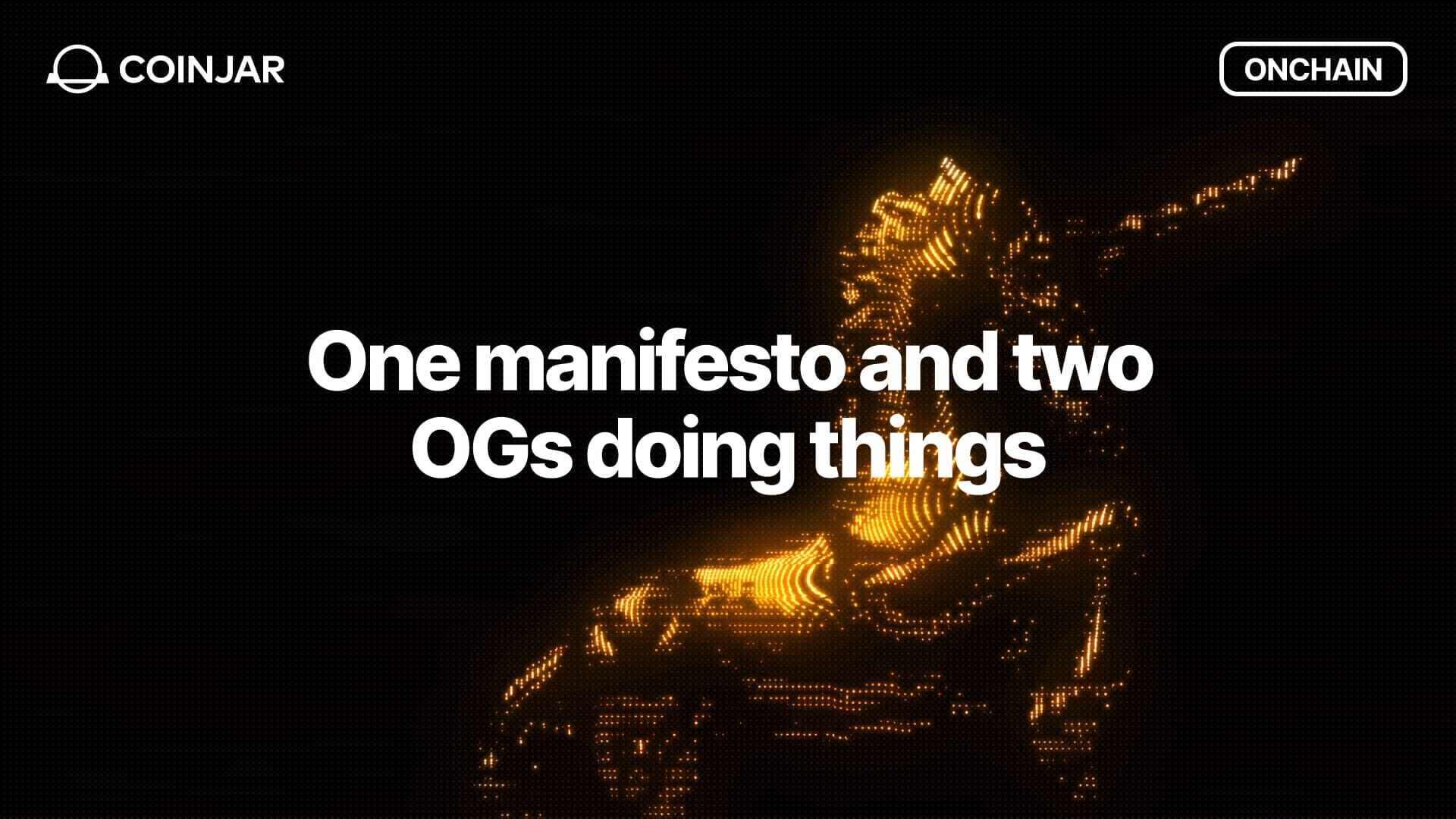Get $20 in free Bitcoin when you sign up and buy $50+ in crypto before January 31, 2026. Terms apply.
Onchain: The new Samcoin, $50 million for real stuff, and yet another exploit
August 2, 2023
Share this:

Story One
The new Samcoin
On July 24th, Worldcoin, the iris-scanning startup, launched its token with the ticker $WLD.
Sam Altman's side project has already faced a lot of criticism for operating their Orbs like an MLM scheme and privacy implications of scanning eyes. But with their launch, the team added a new thing to the list: predatory tokenomics. Only 1% of the total 1 billion supply was launched, with over 80% of that in the form of loans made to market makers.
On its first day of trading, the token price went as high as $3.58 to then fall back below $2.30. However, once the loans to market makers end in 3 months and more of the supply enters the market, it's pretty obvious that without demand for the token, the price will only know one way. 📉
For Worldcoin, that is all part of the plan to distribute WLD to "the majority of humans who are alive today."
Takeaway: Still, don't scan your iris for a token that is controlled by parties with deeper pockets than you. Maybe Sam really started with good intentions, but anyone who watched Death Note will know that good intentions can end very badly.
Story Two
50 million for real stuff
Moving on from eyes to less delicate things: real-world assets. As we discussed last week, it's the latest trend in DeFi to go back to the good old financial securities that our grandparents invested in.
Avalanche is not one to skip a good trend and announced an investment of $50 million in RWAs. The initiative called Avalanche Vista, probably inspired by a Marketing Manager who hasn't updated their Windows OS in a few years, is running under the motto of "digitizing all world's assets." It does make you wonder if, after all, eyeballs count - now that they are worth at least $40 a pair.
The focus of Vista will be the tokenization of assets like equity, credit, real estate, and traditional commodities.
It's not the foundation's first foray into the space of tokenization, earlier, they partnered with KRR, an investment management company, to tokenize part of their equity funds in collaboration with Securitize.
Takeaway: The RWA narrative continues, and even TradFi starts to get a taste of it once they figure out that they can save money and offload tokens to more than just their usual investors. Tokenized treasuries have reached over $641 million in DeFi, and considering how risky crypto is, those relatively risk-free 4% on your money start looking more attractive with each exploit.
Story Three
Yet another exploit...
Speaking of which, while people like me use weekends to catch up on the latest Anime releases, hackers figured it was the perfect moment to attack.

On July 30th, the Vyper team shared that they had found a vulnerability in version 0.2.15. Vyper is a smart contract language layer used in various DeFi protocols, among others Curve, the second-biggest DEX in terms of total value locked. Attackers exploited the vulnerability, draining funds from various Curve liquidity pools.
As so often, one disaster seldom strikes alone. As the value of Curve's native token CRV started spiraling, loans collateralized in CRV were threatened with liquidation, most notably a $110 million loan held by Curve founder Michael on Aave, another lending platform.
Fortunately, he repaid his debt and avoided having to sell CRV into an illiquid market.
It remains unclear how much funds the hackers got away with. Peckshield estimates $52 million despite some charitable MEV bots front-running the attacker and returning $5 million to Curve.
Takeaway: DeFi is risky, and the more interconnected it becomes, the higher the risk that even just one individual holding a huge loan position can negatively drag down the market.
Fact of the week: Speaking of MLMs, J.R. Watkins, who founded his company in 1868, is considered the first to run his company like an MLM, with associates being paid for recruiting others and earning solely on commissions. 🔺
- Naomi from CoinJar
The above article is not to be read as investment, legal or tax advice and takes no account of particular personal or market circumstances; all readers should seek independent investment, legal and tax advice before investing in cryptocurrencies. This article is provided for general information and educational purposes only. No responsibility or liability is accepted for any errors of fact or omission expressed therein. CoinJar, Inc. makes no representation or warranty of any kind, express or implied, regarding the accuracy, validity, reliability, availability, or completeness of any such information. Past performance is not a reliable indicator of future results.
Share this:
On/Offchain
Your weekly dose of crypto news & opinion.
Join more than 150,000 subscribers to CoinJar's crypto newsletter.
Your information is handled in accordance with CoinJar’s Privacy Policy.
More from CoinJar Blog

Onchain: Welcome to the last month of 2025
December 3, 2025Just when you get used to writing 2025 in communications, it's about to end. You look back and wonder, Where did the time go? Meanwhile, VCs are busy publishing their 2026...Read more
Onchain: One manifesto and two OGs doing things
November 19, 2025Story One Wake up babe, new manifesto dropped Why ship app, when you can write manifestos instead, amirite? Or so the Ethereum Foundation & Co. must have thought as they sat...Read more
Onchain: It's getting dark out there
November 5, 2025Not just because of wintertime and crypto coins going down, but also because bad things keep happening in our industry. Before that, here's one positive sign. Story One x402...Read moreYour information is handled in accordance with CoinJar’s Privacy Policy.
Copyright © 2025 CoinJar, Inc. All rights reserved.
CoinJar, Inc. is a registered Money Services Business with FinCEN and licensed as a money transmitter, NMLS #2492913. For a list of states in which CoinJar, Inc. is licensed or authorized to operate, please visit here. In certain other states, money transmission services are provided by Cross River Bank, Member FDIC.
This site is protected by reCAPTCHA and the Google Privacy Policy and Terms of Service apply.